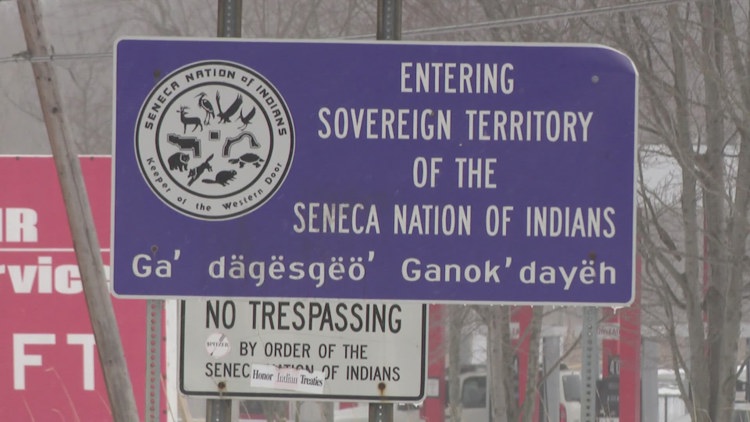A federal judge has ruled that New York State lacked the authority to construct a portion of the Thruway on land belonging to the Seneca Nation, marking a significant legal victory for the Indigenous community. The ruling, which emerged from a long-standing dispute over approximately 300 acres within the Nation’s Cattaraugus Territory, determined that the state improperly took the property in 1954 without obtaining the necessary federal approval.
The decision, issued by Judge Roemer, recommended that New York State’s easement on the land be invalidated. The judge urged the state to engage in negotiations with the Seneca Nation to reach a new agreement regarding the land use. This ruling reflects decades of legal contention surrounding the construction and ongoing use of the Thruway, which traverses the Seneca Territory.
In a statement following the ruling, Seneca Nation President J.C. Seneca highlighted the ramifications of the Thruway’s construction. “With each day that passes and each vehicle that travels the Thruway through Seneca Territory, the State benefits from the illegal use of our land, while the Nation has been denied the full use of our Cattaraugus Territory,” Seneca said. He expressed a commitment to pursuing justice and achieving a fair resolution to the historical grievances faced by the Nation.
The ruling’s implications extend beyond legal parameters; it also calls into question the state’s compliance with treaty rights and federal laws. President Seneca emphasized the need for serious dialogue between state officials and the Seneca Nation. “It is beyond time for State officials to engage the Seneca Nation in meaningful negotiations to account for the State’s violation of our treaty rights, its ongoing violation of federal law, and its illegal use of our land,” he stated.
As further negotiations are anticipated, the Seneca Nation is poised to advocate for its rights and seek restitution for decades of grievances. The case illustrates a broader struggle for Indigenous rights and the recognition of sovereignty over traditional lands. With the ruling now in place, attention turns to how New York State will respond and whether a constructive dialogue can be initiated to resolve this protracted dispute.
The outcome of these negotiations will be crucial not only for the Seneca Nation but also for setting a precedent regarding Indigenous land rights in the region.
